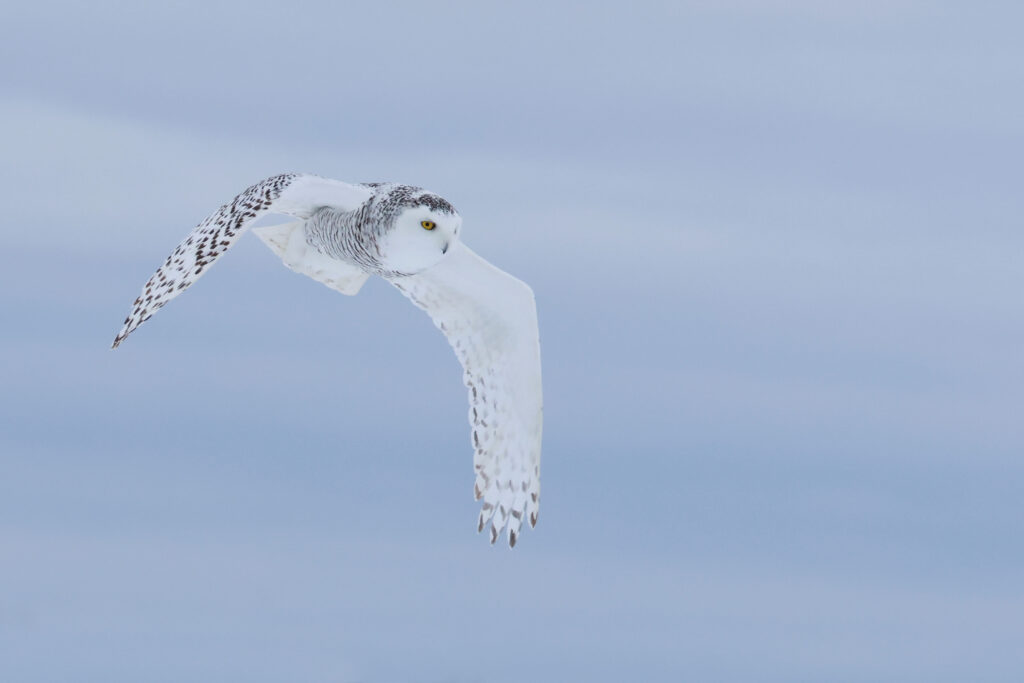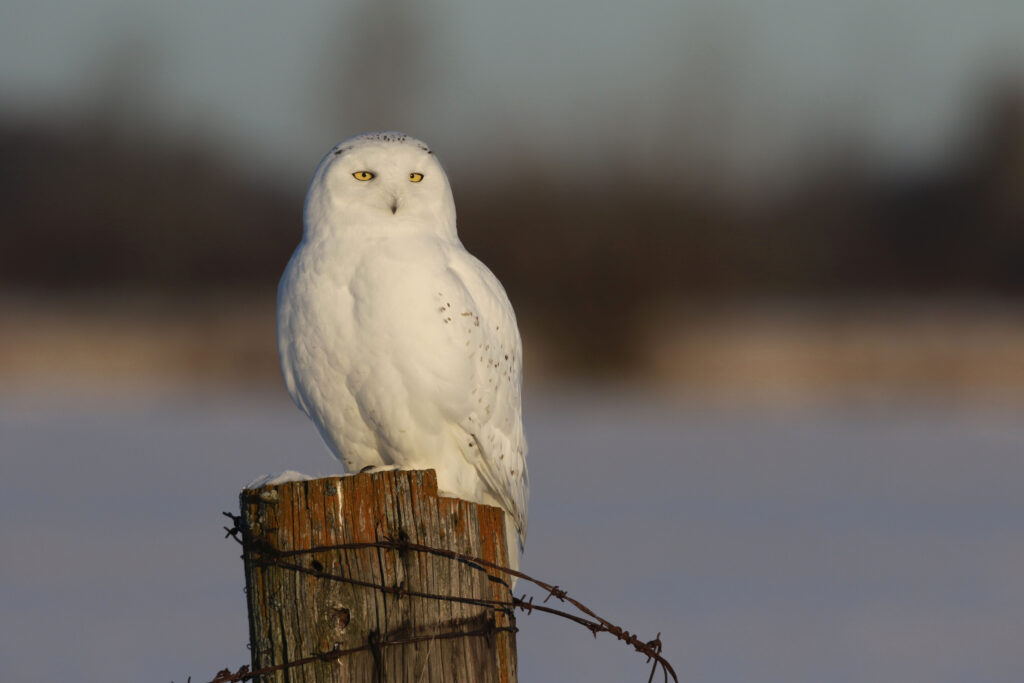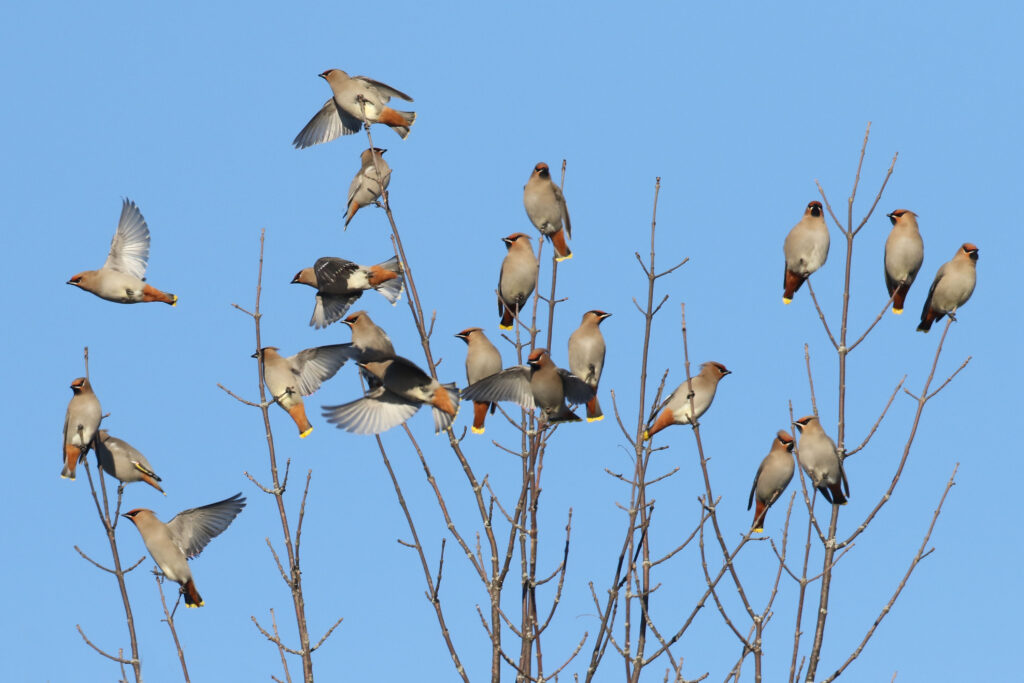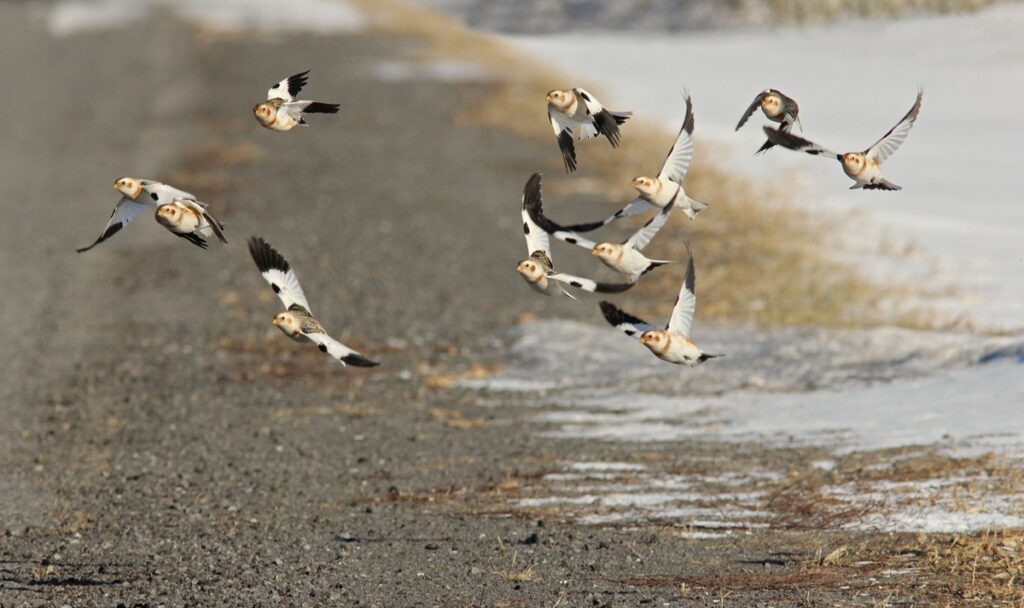By Brian Morin
The idea that winter can be enjoyable is a concept that is foreign to a lot of Canadians. I know far too many who, like groundhogs, tend to hibernate from December through March, venturing out only for work, food or essential appointments.

Of course, there are sports enthusiasts that revel in the sight of snow-covered hills and frozen waterways but that is not for everyone. Those with an interest in the natural world tend to look at the advantages we have in winter more than the downside, which makes passing through this inevitable transition not only bearable but actually exciting.
Let’s start with your own backyard. This is prime time for feeding your local species such as chickadees, cardinals, downy woodpeckers, white-breasted nuthatches and house finches. These birds are permanent residents that deal with whatever Mother Nature tosses their way, year-round. For them there is no hanging out in a tropical paradise for the winter like warblers, vireos, flycatchers, swallows and other songbirds that we find here during the summer.

Our resident birds are adapted for winter conditions but they do appreciate a free lunch and that’s where you come in. “Bird feeding essentials” means having a variety of food available. Woodpeckers and nuthatches love suet and shelled peanuts in a peanut feeder. House finches and cardinals are attracted to sunflower seed and sparrows enjoy mixed seed. Bread is junk food for birds so I’d pass on that.
Then there are the annual winter visitors, birds that vacation in our neighbourhood having come south from northern forests. Dark-eyed juncos and tree sparrows top the list. Joining them will be a few lingering mourning doves. They enjoy mixed seed provided on a platform feeder or tossed on the ground. Of course there will be blue jays as well.
Every few years we receive a surprise visit from colourful northern finches. This occurs when food scarcity in the boreal forest forces them to wander far from their breeding territory. Tiny redpolls feed heavily on seeds of birch and alder and gather in flocks of dozens. Once northern food becomes scarce, they move south, first checking out natural sources of food then heading to feeders. They may be joined by pine siskins, small striped birds with yellow wing markings, looking like sparrows. They are little scrappers that love nyjer seed.

If you are lucky, you may even see evening or pine grosbeaks, large colourful finches with huge bills, able to crack through sunflower seeds with no problem. If there are crab-apple trees nearby, the pine grosbeaks will find them very appealing. Another bird that loves crab-apples, as well as mountain-ash berries, is the bohemian waxwing. This attractive, robin-sized bird has a prominent crest, white wing markings and rusty feathers under the tail. It can be found in flocks of dozens or more. They breed largely in the north-west but travel widely across Canada in winter in search of fruiting trees and shrubs.
A major advantage for observing birds in winter is the lack of foliage. In fact, this is arguably the best time of year to look for raptors because they can often be seen at a considerable distance. For instance, a bald eagle perched in a tree in the open could be seen half a kilometre away. (Make sure you bring along binoculars).
A majority of hawks migrate south from September through November, but there are always a few that linger. The most common large raptor is the red-tailed hawk, a bird that can be right at home along country roads as well as within open urban areas like industrial parks and extensive green spaces. If you see a large, mainly white-fronted bird perched along Ontario’s 400 series highways, there’s a good chance this is the hawk you’ve spotted.

While you are driving in the country, watch for flocks of ‘snowbirds’ in open landscapes, sometimes even on the road in front of you. White and brown snow buntings are usually seen in flocks of dozens, sometimes in the hundreds, as they search roadsides for seeds or pick up grit to aid in digestion.
Perhaps the most sought-after winter visitor is the snowy owl. This beautiful species ranges from largely white adult males to first-year females that have considerable dark markings. Adult females are white but usually have a salt-and-pepper look to them. Be respectful of these birds and do not approach too closely for photos. They hunt mainly after dusk so don’t disturb their daytime rest.
There is no doubt that winter has its challenges but there are some great viewing opportunities if you know where to look. The important thing is to first get off the couch, check your feeders, then head into the great outdoors. Who knows? You might come across a bird you have never seen before.






